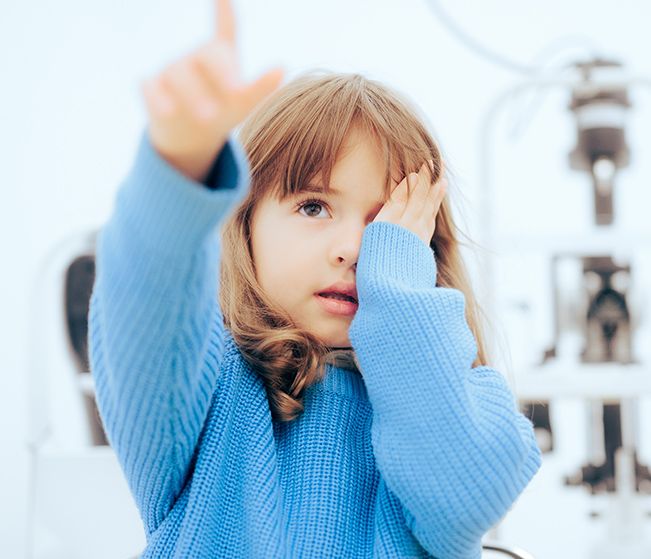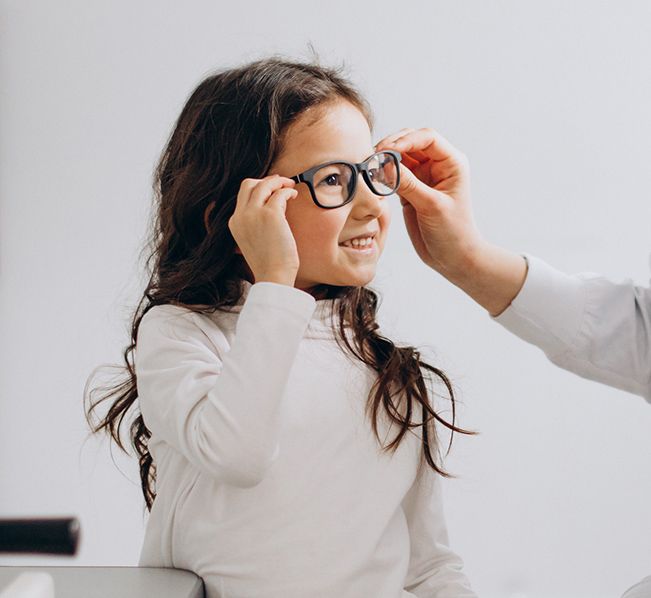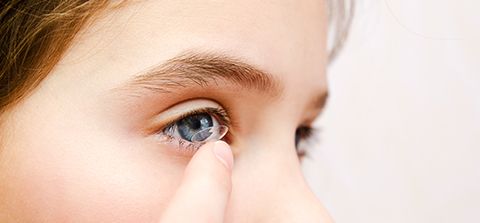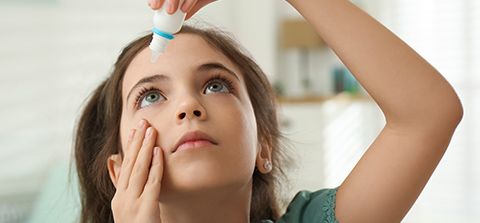
What Is Myopia?
Myopia, commonly identified by nearsightedness, is a prevalent disease affecting children worldwide. It occurs when the eye elongates in shape and causes light to refract, or bend incorrectly. Reduced outdoor time, prolonged near activities, and genetics affect how children’s eyes develop. Since near activities are becoming more popular, studies show this ocular disease is quickly accelerating among children.

Developing Myopia
Myopia usually develops in childhood or early adolescence. Behavioral changes to reduce the risk of developing myopia include more outdoor time and reduced near work. These tips are crucial for children with a family history of myopia.
Any amount of myopia will increase the risk of developing serious eye diseases that cause permanent vision loss such as glaucoma, cataracts, retinal detatchment, and macular degeneration. No amount of myopia is safe.
A comprehensive eye exam from a trained myopia professional will confirm a diagnosis. Treatment options include orthokeratology, specialty soft contact lenses, and prescription eye drops. Schedule a comprehensive exam.

Understanding
Myopia Prevalence
Studies indicate childhood myopia rates are increasing, currently affecting 36% children of American children.1 It is projected to affect over 50% of the global population by 2050. Myopia prevalence is a serious public health issue that requires more attention. Schedule a comprehensive exam.
See below for research that shows failing to treat myopia will increase the risk of ocular diseases.2,3,4,5


Symptoms of Myopia
Symptoms of myopia include:
Blurry distant vision
Squinting to see clearly
Eye strain
Frequent headaches
Excessive blinking
Rubbing the eyes
Children with myopia tend to sit close to the classroom board or TV to see clearly. They may also seem unaware of distant people or objects. If your child shows any symptoms, schedule a comprehensive exam with a qualified eye doctor.
What Can We Do: Myopia Management
Early intervention with proven treatment options can help slow or stop myopia progression in children. Corrective lenses can compensate for poor vision, but they do not prevent vision deterioration. Schedule a comprehensive exam.
Treatment Options
Schedule a comprehensive exam to be screened for myopia along with a routine check-up.
Frequently Asked Questions
No amount of myopia is safe! If your child has any amount of myopia, indicated by a negative prescription number, schedule a comprehensive exam right away to begin slowing their myopia progression.
Treatment can persist throughout childhood and adolescence or until the myopia stabilizes. The timetable for treatment differs on a case-by-case basis, but Dr. Khaldieh will keep you updated throughout the process.
Yes. Beyond Eyecare exclusively uses FDA approved products that are known to be safe. Dr. Khaldieh also gives thorough instructions for use of every product at home. We provide more information and links to case studies on our resources page.
Myopia is very well known in the eyecare community and is being actively taught about in optometry schools today. With that said, there is still a lot of work to be done with educating the public and other medical professionals.
Yes. Dr. Khaldieh prioritizes studying the most effective, up-to-date approaches to managing myopia while treating cases of myopia with optimal results. We provide a list of recognized studies referencing the information provided on this page along with additional information on our resources page.







